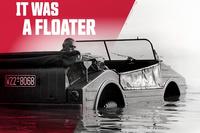Having your brakes fail while you are driving is a dangerous and horrifying experience, especially when you are traveling on an interstate highway or other high-speed roadway.
The National Safety Council has these tips for coping with brake failure:
• At the first sign of trouble, try not to panic. Instead, work your vehicle into the right lane and then toward the shoulder or, if possible, towards an exit. If it is necessary to change lanes, do so smoothly and very carefully, closely watching your mirrors and the traffic around you.
• Remember to use your directional signal to indicate your intentions to other drivers. When you reach the right lane, turn on your emergency hazard lights.
• Let the car slow down gradually by taking your foot off the gas pedal. Simply steer as your vehicle slows and shift the car into a lower gear to let the engine help slow the car.
• Once off the traveled roadway, shift into neutral and gradually apply the hand brake until the vehicle stops. If that brake has also failed, direct the car onto a soft shoulder or rub the wheel against a curb which will help you slow down. Get the car off the roadway and to a safe place to avoid stopping traffi c or being involved in a rear-end collision.
• When safely off the road, put out flares, warning flags or reflective triangles beside and behind your vehicle to alert other drivers; keep your emergency flashers going.
• Raise your hood and tie something white to the radio antenna or hang it out the window so police officers or tow truck operators will know you need help. Don’t strand behind or next to your vehicle; if possible, stay away from the vehicle and wait for help to arrive.
• All interstate highways and major roads are patrolled regularly. Also, some highways have special “call-for-help” phones and, of course, if you have a CB radio or cell phone you can call from your vehicle.
• It is inadvisable to walk on an interstate. However, if you can see a source of help and are able to reach it on foot, try the direct approach by walking, but keep as far from traffic as possible.
A final caution: Do not be tempted to drive your vehicle, no matter how slowly, without brakes! Call for help to get your disabled vehicle towed and then have the brakes repaired by a qualified mechanic.
Related Links:
Brake Maintenance: 5 Warning Signs
Brake Maintenance: Checking Brake Fluid
Brake Maintenance: Checking and Replacing Brake Lines
Brake Maintenance: Bleeding Your Brakes
Brake Maintenance: Inspecting and Replacing Discs and Brake Pads
The National Safety Council has these tips for coping with brake failure:
• At the first sign of trouble, try not to panic. Instead, work your vehicle into the right lane and then toward the shoulder or, if possible, towards an exit. If it is necessary to change lanes, do so smoothly and very carefully, closely watching your mirrors and the traffic around you.
• Remember to use your directional signal to indicate your intentions to other drivers. When you reach the right lane, turn on your emergency hazard lights.
• Let the car slow down gradually by taking your foot off the gas pedal. Simply steer as your vehicle slows and shift the car into a lower gear to let the engine help slow the car.
• Once off the traveled roadway, shift into neutral and gradually apply the hand brake until the vehicle stops. If that brake has also failed, direct the car onto a soft shoulder or rub the wheel against a curb which will help you slow down. Get the car off the roadway and to a safe place to avoid stopping traffi c or being involved in a rear-end collision.
• When safely off the road, put out flares, warning flags or reflective triangles beside and behind your vehicle to alert other drivers; keep your emergency flashers going.
• Raise your hood and tie something white to the radio antenna or hang it out the window so police officers or tow truck operators will know you need help. Don’t strand behind or next to your vehicle; if possible, stay away from the vehicle and wait for help to arrive.
• All interstate highways and major roads are patrolled regularly. Also, some highways have special “call-for-help” phones and, of course, if you have a CB radio or cell phone you can call from your vehicle.
• It is inadvisable to walk on an interstate. However, if you can see a source of help and are able to reach it on foot, try the direct approach by walking, but keep as far from traffic as possible.
A final caution: Do not be tempted to drive your vehicle, no matter how slowly, without brakes! Call for help to get your disabled vehicle towed and then have the brakes repaired by a qualified mechanic.
Related Links:
Brake Maintenance: 5 Warning Signs
Brake Maintenance: Checking Brake Fluid
Brake Maintenance: Checking and Replacing Brake Lines
Brake Maintenance: Bleeding Your Brakes
Brake Maintenance: Inspecting and Replacing Discs and Brake Pads









